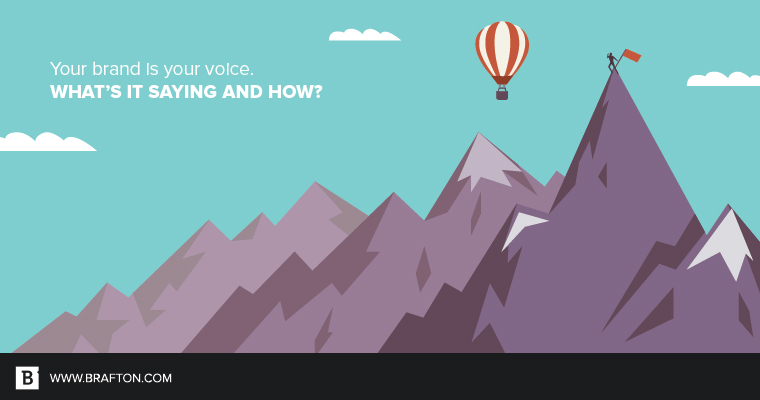You wouldn’t hire a mechanic who mistakes engine repair for bodywork (we hope). The same logic should hold true for brand development.
While often considered interchangeable, your brand and your business are separate concerns. Sure, the two are inextricably linked, but to excel at brand development, you must understand what differentiates one from the other.

Brand vs. business
When attempting to untangle the difference between a brand and a business, it can be helpful to think of a job interview. No, not the sweaty palms and stammering replies, but the overall presentation.
Your resume is what’s on offer – experience, expertise, etc. That’s your business. Your brand is how you present this information, from the way you word your answers to the outfit you put on that morning.
“Branding isn’t about what your business does,” said Brafton President Tom Agnew. “It’s about the moment you present yourself to others, when you start saying, ‘Talk to me, look at me.’ Branding starts as soon as you start marketing.”
Building a business isn’t difficult; making it a success is. You can create a website to sell your widgets in the time it takes to order and eat a pizza. Of course, without appealing to your target audience and setting yourself apart from other businesses, you’re left with nothing but crust.
Enter content marketing.
“When you start content marketing, you start thinking about personas, about who will be interested in what your business does,” Tom said. “And from there you determine how to present yourself. What’s going to resonate with the people you want to do business with? What kind of visuals and voice do they want?”
You can burn the midnight oil on branding efforts to your heart’s content, but at the end of the day, your audience has final say-so.
“Businesses are lots of things: financing, hiring, making, selling, buying,” said Colin Campbell, Senior Director of Content Marketing at Brafton. “But brands are perception. A business can consider itself to have a brand when its customers say it has one.”
“Branding starts as soon as you start marketing.”
Building a brand
You know your audience comes first, but beyond that, what’s the special sauce that truly brings a brand to life?
“Clarity of values and consistency of product,” said Brafton Chief Product Officer Meredith Farley. “The former has to justify to the consumer why you exist – what is your vision that makes you worthy of taking up space? – and the latter needs to support your continued existence by proving you can live up to your promises.”
For Brafton Design Director Ken Boostrom, the answer lies in the nuts and bolts of visual marketing.
“Branding is 80 percent visual,” he said. “It’s how we humans process, identify and categorize nearly everything before deciding its value. The saying ‘a picture is worth a thousand words’ is true. It’s how you get recognized. But there are brand attributes that drive your business and its visual design. The objective is to be relevant to your audience or create relevance for a new audience.”

Branding in the digital age
The internet has made brand development more egalitarian. The traditional gatekeepers of brand image – TV, radio, magazines – have been overtaken by a digital landscape that puts unlimited information at consumer fingertips. People don’t just buy into jingles and humorous ad campaigns anymore – they hop online to research businesses.
While some industries will always rely more on the power of branding – the right logo can shoot the price of a handbag into the stratosphere, after all – the world wide web has leveled the playing field and made brand development just as essential to business-to-business enterprises as it always has been for business-to-consumer businesses.
“You used to be able to market without a brand, because if you were marketing just to search engines, it wasn’t a branding exercise, it was a pure business exercise,” Tom said. “Today, we’re creating content for real people, and real people expect the brands they interact with to be as polished as any big B2C organization in terms of branding.”
Now every business has a voice, and the cacophony can be deafening. Consumers are searching for a brand to cut through the noise and connect.
“Branding is really just good, consistent and relevant communication with your targeted audience,” Meredith said. “Content marketing provides just that – it helps you get the right messages to the people you want to talk to.”
People are listening. What’s your brand saying?





